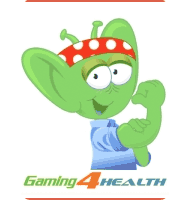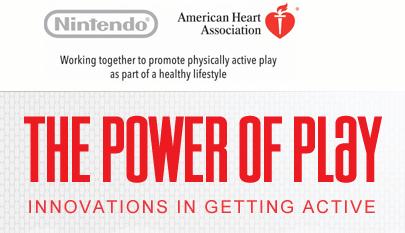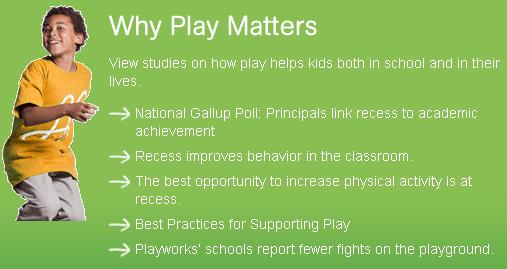 Jan. 29, 2011 No doubt about it, I need more PLAY in my life. You?
Jan. 29, 2011 No doubt about it, I need more PLAY in my life. You?
I’m rereading Dr. Stuart Brown’s Play: How it Shapes the Brain, Opens the Imagination & Invigorates the Soul and following the “Recess Counts” Twitter stream w/newsy tidbits like ChicagoTrib’s “How Cold is Too Cold for Recess?” noting the logical bridges between outdoor fun and indoor exergaming that fit right in the sweet spot of a summit I recently attended, the Power of Play: Innovations in Getting Active (AHA/Nintendo alliance).
Living in California, I thought I’d ask you winter weather wind-chill folks how many took the kids out sledding on the weekend? (um, not on a Wii)
Hanging out all day with electrophysiologists, kinetic experts and more academia than you could fit in a classroom, I realize that for me, there was one thing ‘missing’ in all of the scientific lab-rat jargon and thought leader convos about kids’ motor skills and ways to get kids up and moving (even in lousy weather)… the sensory joy of truly tactile play.
You know…the sloppy, messy, drippy, feel it to the core, slush of snow. The stomp in the puddles muddy muck of rain. Physicality framed beyond ‘if this, then this’ reward motivation into more esoteric sensory pleasure. Sledding with crunchy, soft, slip and slide equilibrium and lessons in balance that have often unforgivable outcomes and an accelerated learning curve…
Machines, devices and technology sims can be fabulous training tools and exerplay, but make no mistake, it’s NOT the same as real life sensory, tactile and socioemotional learning. (flashback to some smartie pants pals who thought rowing my scull in the lagoon was a cinch, “I got this, I use a rowing machine at the gym all the time” ahem)
In reporting out the unequivocal promise and possibility of health interventions using exergaming, the social graph, mobile media and active play (particularly with ‘compromised’ audiences, since the summit made it clear that heart-wise “exercise is most beneficial for the least active part of the population,” and it’s critical to get that bottom 20% up and moving) we need to reiterate time and again that it’s not an ‘either/or’ but an ‘and/also’ framing that needs to be driven DEEP into the kids and recess online/offline kinetic conversation.
 Yes, if we can use gaming to initiate PLAY and reach those “unwilling or unable” to make changes, some of whom are already sedentary, immobile or hard to wean from the screen, this could be a solid first step prescription for inertia-budging…
Yes, if we can use gaming to initiate PLAY and reach those “unwilling or unable” to make changes, some of whom are already sedentary, immobile or hard to wean from the screen, this could be a solid first step prescription for inertia-budging…
Yes, digital exer-gaming HAS done a great job of amping up the fun, social side of Gaming For Health (the summit reports 48% of parents play with kids once a week using gaming mechanisms) and they may be a huge gateway to initiating behavioral change.
And yes, stereotypes of isolated twitch gamers in dark rooms have been upended by the growth of an industry pacing at five times more than the national economy with almost 70% of gamers playing socially (up from 50% in ’06) …
…But before we start giving out Rx slips for “active screen time” I’d like to make a case for play in its purest sense.
Just as Susan Linn wrote an entire book on The Case for Make Believe, I think we’re starting to see the next generation of educators and health sciences researchers spilling forth making a massive “The Case for Play” universally…
…At work, (see How Play Promotes Creativity) at school (see CDC paper on active play impacting academics, and PlayWorks interview on GMA about resurrecting recess) at home (see CNN op-ed, Want to Get Your Kids Into College? Let them PLAY) and in our communities…
It’s as if we somehow need to justify every smidge of time allocated to childhood with ‘data’ to show and tell the obvious…Play, WORKS, people. It helps kids become smart, social, resilient, problem-solving human beings.
Next we might see research justifying the Case for Learning Collaboratively (both offline and online via digital avatars and among our social ‘graphs’ of peers) or the Case for Common Sense (rejecting the notion that pedagogy should alter with every new shiny penny to engage kids in a supposedly better-healthier-smarter way) In short?
As Dr. Brown would say, “As we become adults, taking time to play feels like only a guilty pleasure, a distraction from ‘real’ work and life” but it’s really a basic biological drive as integral to our functioning as health and nutrition. So let’s be clear:
It’s not the platform it’s the PLAY that powers up the joy juice.
So there’s my context and framing for the upcoming Power of Play series (here’s a tweet doc of the conference notes along with this fun “Case for Sledding”…
Yes, ‘real’ sledding, as in a family activity, outdoors with over-stuffed snowsuits, cocoa, injury risks and all of that real life snowangel flappin’ yahoo of a good time…
This is how it may have come out of some of these brilliant conference attendees and kinetic gaming aficionados at the AHA/Nintendo gig sounding something like this:
“The Case for Sledding…”
“Vestibular: Moving on a sled stimulates the vestibular system. With a traditional sled, movement is primarily forward. Depending on the “sledder” the speed may be fast or slow. “Flying saucers” and tubes, frequently rotate, thereby stimulating the vestibular system in a way similar to spinning. This stimulation can excite or energize the brain.
The movement also challenges the “sledder’s” balance. Thus, equilibrium reactions are elicited to maintain balance.
Proprioception and Kinesthesia: The movement required to stay balanced on the sled, the sensation of falling off the sled and the heavy work of dragging the sled up the hill all require work from the muscles and joints.
This work stimulates the proprioceptors. Happily, these nerves activate areas of the brain that help inhibit unnecessary stimulation. So, as the child gets super excited going down the hill, hauling the sled back up reorganizes the neurological system.
Doing this repeatedly makes the whole excitation/calming down system more efficient-much like exercising muscle fibers repeatedly, makes them stronger. Which brings us to:
Muscle strengthening: All that heavy work rolling in the snow, getting up after falling off the sled, walking up the hill, all requires muscle power and endurance. Happily, the ride down gives time for recovery so the muscles can sustain the workout for a much longer time than a typical exercise routine. The great part is that core muscles are especially getting stronger.
Collateral Benefits: fresh air, fun, socialization, parent child bonding, spending time away from a television…” etc.
…You get the drift.
(Thanks, Jill Mays , see the rest of her fun family sledding post on The Motor Story)
I just needed to provide some “unplugged/kinetic” context for my series of ongoing coverage of the AHA/Nintendo summit that toggled some core areas in my own brain for fresh ways we can get kids moving…I’ll say it again…PLAY works.
p.s. Here’s Pt 2: Tag Teaming Innovation in this series, and Pt3 on active gaming
Related Resources About the Power of Play
Transcript for Power of Play (WhatTheHashtag)
The Tranformative Power of Play (PlayWorks.org)
Kids @Play Summit: Highlights from CES 2011 (Cooney Ctr)
Future of Health, Gaming for Health (PSFK)
HealthGames Camp SF: Playing To Win (Design Mind)
How Play Promotes Creativity at Work (FastCompany)
Can Sitting Too Much Kill You (Scientific American)
11 Surprising Benefits of Play (Michele Borba)
Related Posts on Shaping Youth: Power of Play
Nature Rocks: Reconnecting Families W/Nature (Shaping Youth)
Shaping Youth: Get ‘Em Outside!
Shaping Youth Joins Eco-Literacy Coalition: NCLI
The Value of Unstructured Play
The Case for Make-Believe Part One
Defending Pretending: The Need for Prominent Play: Part 2
If Kids Could Be Dolphins: The Power of Creative Play
Visual Credits: Lead photo Illustration, StuartBrownMD.com boy bundled in snowsuit/sled by Petr Kratochvil, public domain photos











Thanks for covering this Amy! I’m drifting more and more back into the basics of what is useful rather than saturating things with buzz words in social media or even “innovation”. The last word is something I’m working on redefining for my work.
Sometimes we get so bogged down in the data, the reports and the pundits that we forget why these kids need certain things to develop well. Has an eerie foreboding of a sanitized futuristic movie a la “A Brave New World”. Play works because it’s fun, tangible and rewarding on a basic level.
Exactly, Andre. And I must say, I’m giddy that a pal of mine serving on the board of PlayWorks.org just invited me to an event they’re having next week to see how we can mutually align, as I found the speaker from their org (Elizabeth Cushings) EXTREMELY compelling in her plea to renew recess from a sociological needs perspective as well as a physical one!
I’m trying to snag an interview with her directly rather than just ‘report out’ on the conversation there, but her logic and ‘usefulness’ mirrored my own experiences on playgrounds coming in ad hoc to deliver media literacy skillsets…lots of ‘say whaaaa?’ moments for me when I saw the devolved aspects of needing to ‘RE-learn’ how to play, negotiate, resolve conflict, take turns, etc. Enlightening stuff.
We tend to harken back to our own childhoods without seeing firsthand the new ‘problems’ being created by ludicrous ‘solutions’ like making more class time sans recess. argh.
Stay tuned for part two…and thanks for the conference invite, btw. Some great minds there for certain.
My wife bought sleds so that my two and four year olds could experience them down the hill in our backyard. I did not plan on “enjoying” them, as I’m a proud Southern California native myself… until I saw how much they were loving it two weeks ago. I just had to join in, and it was amazing how having fun together really helped everyone’s overall disposition that day.
I have to agree that Play is great for kids. I’ve personally noticed an increase in creativity over time running around the house playing hide and seek from one another, and I am starting to see differences in the types of questions my daughter asks when we play Guess Who together.
They’re both getting into gaming, (my secret plan is working) via the iPhone and iPad, but it is good to remember that these are “AND” activities, instead of “OR” activities, when it comes to their development. Thanks for the reminder. 🙂
I’m searching my archives for my post https://shapingyouth.org/?p=41 glitching, but here’s the text:
“VERB Yellowball: Prompting Kids to Play? by Amy Jussel (circa 2006/Sept)
“Here’s a great integration of a viral marketing media blitz with mega-support from the entertainment industry, aimed to get kids moving and prompt them to play.
I’ll squelch my editorial ‘eek’ on the need for same, because this concept is worthy, even if I was disheartened by kids receiving the balls asking, “What do I do with it?” and “Can I keep it?” umpteen times.
(I’ll leave the disturbing psychological outcomes of rampant consumerism and free play paralysis to Susan Linn, Ph.D. and keep my lens focused on the media/mktg. outcome)
My eleven year old had already ‘heard of VERB™ Yellowball but when I asked her my usual media mom stuff, “who’s behind it, what’s the objective, how are they reaching kids” she for once was a bit stumped, and couldn’t articulate what it was all about. Turns out she wasn’t alone. VERB’s own staff was equally vague when we encountered their massive promotional blitz while visiting friends in Anaheim for the big blowout Radio Disney 10th Anniversary Concert.”
As we approached the arena, teens in bright yellow tees were clearly staging a ‘happening’ in the parking lot. (Very ‘O.C.’ I’m told) There was an obstacle course set up. Microphones blasted. And kids were drawn toward the buzz like lemmings. As we got closer, I heard kids being asked their ages and handed a ball if they were between 9-13.
It’s “VERB™ Yellowball! We’re getting tweens active!”
I’m thinking this is a brilliant idea, setting up a place for kids to get their ansies out before standing in line, probably sponsored by a fitness or health ed group, and “yay, fabulous, bravo, healthy, right up my alley for Shaping Youth.”
But wait…Did they just say “tween?” Why not ALL kids?” (you can imagine how well that went over when younger siblings were denied a ball)
My marketing synapses suddenly fire up, “hmn, they’re SPECIFICALLY targeting tweens…VERY cool name, serious branding strategy, lots of thought, tons of hype, clearly big bucks sponsors…who’s behind this thing? They’re saying ‘play and pass it on’ so it’s gotta be viral, buzz, maybe data collection…whoa, “um, honey can you throw me that ball a sec?”
Sure enough, imprinted on the back it says, “Play with this ball. Go to verbnow.com, enter the code below and tell us what you did with it. Pass it to another kid.” Bingo! I’m about to find out who’s behind this gig, right?
Well, I was in for a surprise. The fun-zingy action-packed site had pixie magic all over it, with every bell & whistle imaginable to blog, video, mix, create a “Virt” character, download a desktop buddy, and let kids make their mark and ‘be a part of’ the Verb ‘experience.’ Hilary Duff was on the landing page with a line or two about how she’s “hangin’ and playing with YB”—So I’m figuring it’s gotta be a Disney deal, right?
But then I see a COPPA mark, (preteen privacy act/digital compliance) and a line that says VERB is a trademark of the U.S. Department of Health and Human Services and Centers for Disease Control and Prevention (CDC)!
Huh? Say what? Now I’m thinking there’s a huge disconnect here. Why would the government bury that information to families that are skeptical of internet corporate interests? If it’s a fun, harmless, healthy habits style prevention program then at least train staffers to stay underground and elusive for their kid-friendly coolness vibe but whisper the truth to inquiring parents.
The VERB website says, “It’s a big, bouncy, world-changing idea that was created to spread play to every kid in America. Here’s the deal. We’re scattering thousands of yellow balls all across the country. It’s up to you to find one, play with it, and most importantly, pass it on. FIND ONE. Someone is bound to pass one to you. Can’t wait? Check out our “Pass It On” section. PLAY WITH IT. However you want. Whenever you want. Just play.”
I LOVE this idea. What parent or child wouldn’t? Viral marketing the concept of play in its purest essence? Yes, absolutely! Get those kids outdoors. Throw ‘em a ball. Hurray! Bravo!
Just don’t leave us hanging, or you’ll have media mavens like me deconstructing, “Is this a biz/govt. partnership exchanging credibility for tween data? Could they have struck a deal with Disney for access to kids’ online behavior? Market research? Click through rates? Viral pass along? The privacy policy states the CDC doesn’t share the personal info, but who or what is the motivating force behind the funding and alliances?
With pervasiveness at an all time high and consumers getting more skeptical and protective of their kids’ media intake, it would make sense to let us know who the good guys are.”
Amy,
Thanks so much for the great post. The physiological benefits of sledding were fun for a nerd like me to read. And here I thought we were just doing the snow-gear gig (45 minutes to get geared up for 20 minutes of play in near-zero temps) to have an excuse for hot chocolate–or maybe so I could ensure good sleep later. 🙂
Hello Amy,
Found your site and all. Short thing is we sponsor outdoor activities for young kids and parents. We’re playing in the snow on Saturday in Gaylord Michigan. Nothing fancy, just the usual ol’ activities like snowshoeing nature hike, snow angels, snow houses, pulls in sled, hot chocolate. It’ll be great. On FaceBook it’s Winter Fun Otsego (group) and Outdoor Winter Fun Day (event). Get outside withthe kids, enjoy!